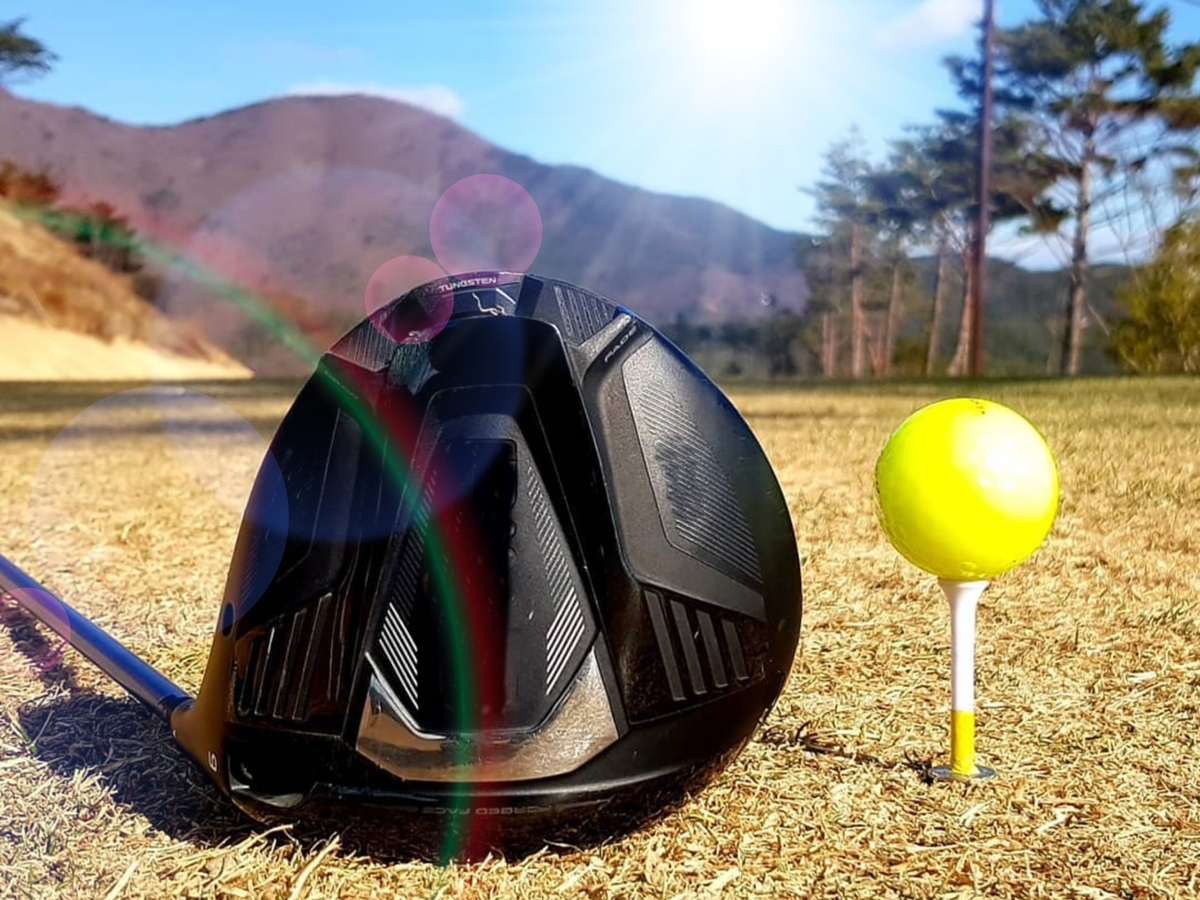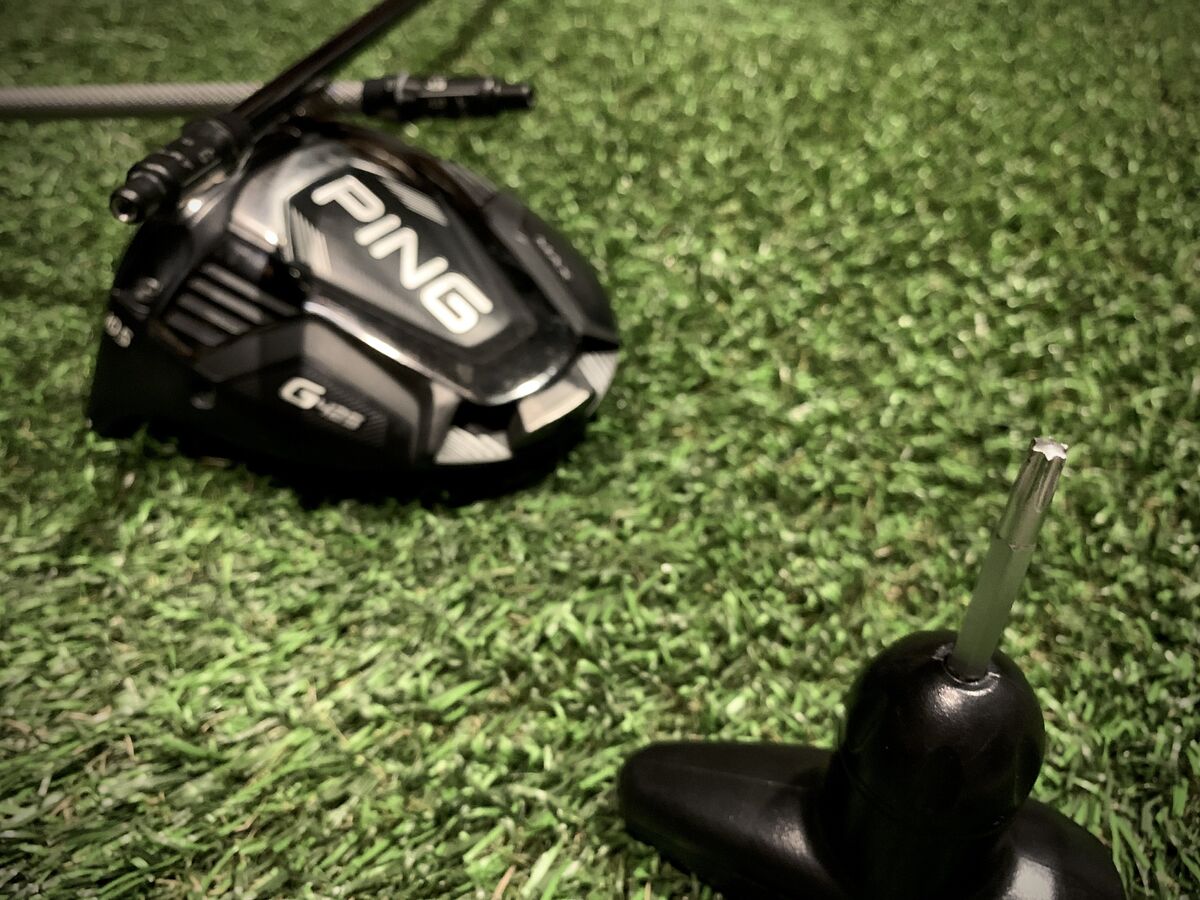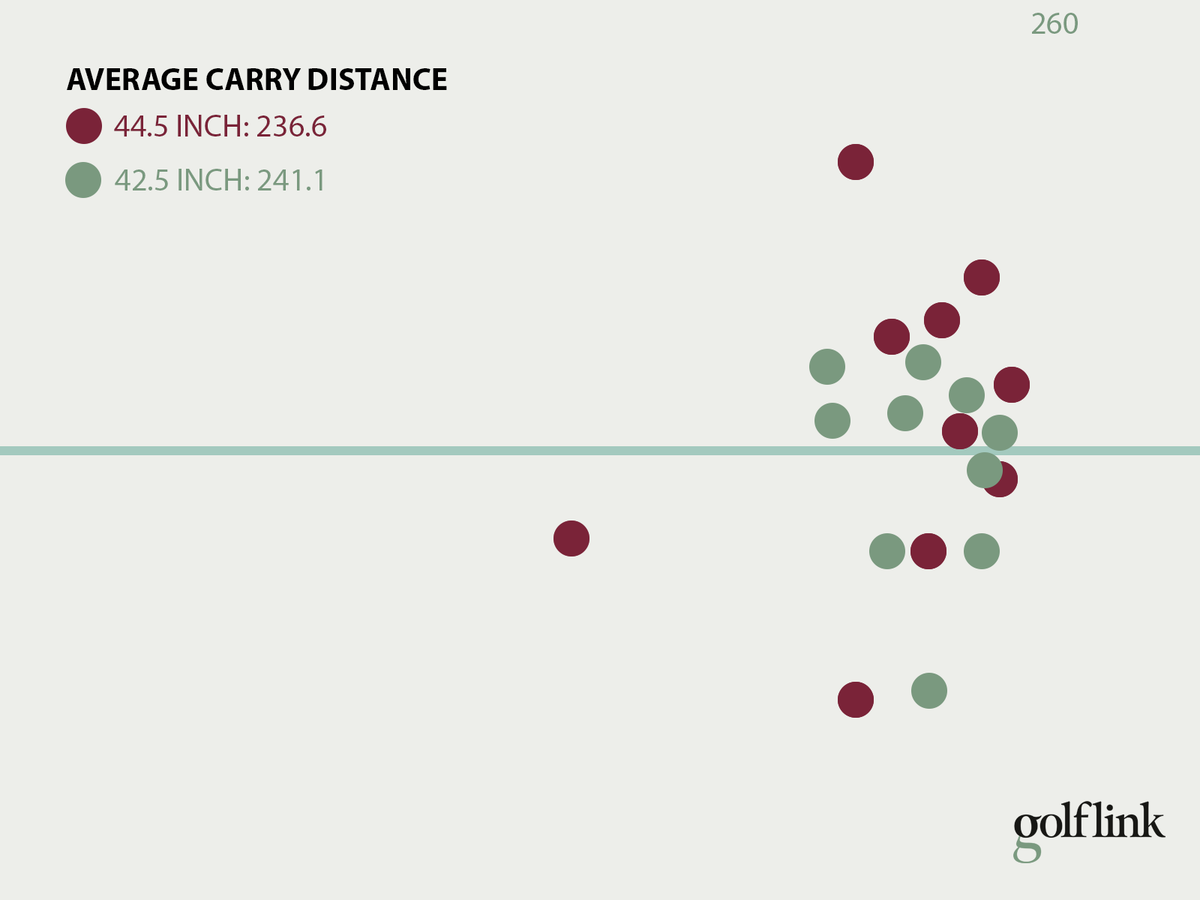The Benefits of a Shorter Driver Shaft & How to Shorten Yours

It might be time to question your driver. Specifically, the length of your driver.
If you pay close attention to such granular details, you’ve probably heard people suggest that a shorter driver shaft could improve your performance. If you don’t, you probaby just play a driver at the standard off-the-rack length, a move that is all but guaranteed to be costing you distance and accuracy off the tee.
We’ll explain.
Standard vs. Shorter Driver Length
Many of today’s drivers from the big-name manufacturers – Titleist, Callaway and TaylorMade – measure 45.75-inches. That insane length helps them scream “more distance” from the mountaintops, thanks to robot testing. Unfortunately, golfers are not robots.
If you need proof that 45.75 inches is too long for a driver shaft, look no further than the PGA Tour, where the average driver length is in the mid-44-inch range. No offense, but you’re not nearly as good at hitting the sweet spot as those guys.
Tom Wishon, one of the world’s most famous club builders, researched the impact driver shaft length has on distance and dispersion. With the help of 50 golfers of all skill levels, Wishon tested 43, 44, and 45-inch driver lengths, and found that golfers of all abilities were somewhere between six and nine yards closer to the center of the fairway with the 43-inch driver than the 45-inch driver.
Furthermore, he found that all handicap groups, with the exception of 0-5 handicap players (about 8.5% of male golfers and 1.4% of female golfers), actually gained distance by switching to the shorter shaft. That proves the theory that more sweet-spot strikes equates to more distance and control.
Consider this: If you’re a 20-handicap player currently using a 45-inch driver, simply switching to a 43-inch driver – according to Wishon’s research – could give you the same driving accuracy as a single-digit handicapper using a 45-inch driver. Wouldn’t that be nice?
Put another way, high-handicappers in Wishon’s research improved their driving accuracy with the shorter driver to the same level as single-digit players with the 45-inch driver.
Here's how the performance with a 45-inch driver compared to a 43-inch driver in Wishon's research. Results with the 44-inch version fell between the 45-inch and 43-inch results in all instances.
|
Handicap Group |
Driver Length |
Distance (Yards) |
Yards From Center |
|
24-36 |
45” |
206.4 |
25.3 |
|
18-23 |
45” |
214.2 |
26.4 |
|
12-17 |
45” |
221.3 |
23.5 |
|
6-11 |
45” |
227.1 |
18.2 |
|
0-5 |
45” |
238.7 |
15.7 |
Of course, your individual results may vary. But no matter where your handicap falls on this chart, those accuracy numbers should have you questioning your current setup.
After studying this concept, we had to put the shorter driver shaft experiment to the test first-hand, so that’s exactly what we did.
Our Shorter Driver Experiment
In the age of adjustable drivers, this experiment is pretty easy, inexpensive (relatively), and as temporary or as permanent as you want it to be.
If your driver's hosel is adjustable, and it has a sleeve that allows you to pull the entire head off the shaft, there’s no need to hack off part of your shaft in the name of tinkering.
Instead, buy a new adapter sleeve (make sure it’s made for your model of driver) and a shaft in the length you prefer (make sure the tip diameter fits your adapter sleeve).

Driver head with wrench and multiple shafts
That’s exactly what I did. My gamer plays to a length of 44.5 inches, and I wanted to test it against one that was 1-1.5 inches shorter, so I brought my PING adapter sleeve ($15 on Amazon) to my local golf shop, where the owner told me he had 5,000 shafts in the basement. I gave him the specs, and my budget ($60), and came back the next day to pick up the new shaft.
The shaft he handed me ended up being two full inches shorter than my already-shorter-than-standard gamer, which admittedly was unsettling. I had some spare grips laying around the garage, so all in, this test cost $75.
I choose to purchase a separate shaft rather than hack an inch or two off my existing one for a few reasons. First, I’m never a fan of causing irreversible alterations to my clubs. I didn’t want to be cornered into a shorter shaft without knowing which one would perform better.
I also like the idea of having flexibility to switch shafts any time, regardless of which length ends up earning the starting spot.
Finally, simply cutting the existing shaft impacts its flex and the club’s swing weight, some of which you can account for if you opt to use a different shaft rather than cut the existing one.
The Shorter Driver Shaft Experiment Results

Carry distance of 42.5 inch driver vs. 44.5 inch driver
For this test, I hit 10 shots with each shaft length on a Foresight GC Quad launch monitor, switching shafts periodically to offset hot streaks and fatigue. Because part of this test is to account for how usable the worst shots are, I did not eliminate shots from this data.
If you perform the same test, your results could be completely different, or they could be similar, but for what it’s worth, here’s what we found.
|
44.5 Inch Driver |
42.5 Inch Driver |
|
|
Club Speed |
102.4 |
99.3 |
|
Ball Speed |
145.9 |
143.6 |
|
Smash Factor |
1.43 |
1.45 |
|
Carry Distance |
236.6 |
241.1 |
|
Total Distance |
258.1 |
264.1 |
|
Backspin |
2479 |
2349 |
During and after testing, a few things jumped out at me. First of all, 280 is about all the yardage I squeeze out of the big stick these days, and when I hit the first 280-yarder of the test, which came with the longer shaft, I suspected that would be the sacrifice of moving to the shorter shaft. I assumed the longest drives with the longer driver would be longer.
However, it turned out that the two longest, and three of the longest four drives of the 20-shot test came from the shorter shaft.

Total distance scatter plot of 42.5 inch driver vs. 44.5 inch driver
The second thing that jumped out at me was an assumption I made that turned out to be true.
I figured my club head speed would suffer a little with the shorter shaft. I’m not a scientist, but that seems pretty logical. And of course, club speed with the longer shaft was just north of three MPH faster. However, this didn’t result in more distance for a few reasons.
Strikes with the shorter shaft were higher-quality, closer to the center. With a noticeably better smash factor using the shorter shaft, the ball speed discrepancy wasn’t quite as big as the swing speed discrepancy. Further, given better strikes, I saw better spin rates with the shorter driver, and those factors combined to result in more carry and total distance with the shorter driver.
The Immeasurable Takeaways
Not all results can be quantified, and there’s a lot of feedback from this experiment that simply cannot be measured.
First, a driver this short – just 42.5 inches – feels insanely short. When I first took a stance with it, I couldn’t even take the club seriously at this length. But then I started hitting some shots, which takes me to my second point.
A driver this short is incredibly easy to hit. I instantly felt a level of control over my driver swing that I’d never experienced before.
Can a Shorter Driver Shaft Cure a Slice?
Yes, moving to a shorter shaft in your driver can help neutralize or eliminate a slice.
Even though the data – both this personal test and Wishon’s more extensive research – illustrates that a shorter shaft usually results in more distance, most people implement a shorter shaft to improve accuracy. If you tend to hit a slice off the tee, then you’re probably interested in improving your accuracy.
In our test, pretty much every measurable data point that correlates with hitting a slice was neutralized with the shorter shaft.
Swing path was almost one degree more neutral (less out-to-in) with the shorter shaft.
Launch direction was slightly closer to the center line with the shorter shaft, evidence that it’s easier to control the club face on the shorter-shafted driver.
Sidespin improved from an average 126 RPMs left (which as a lefty, left sidespin is slice spin) to 321 RPMs to the right (draw spin). The predominant shot with the shorter-shafted driver was one that started left and curved back to the right (soft draw). Meanwhile, the predominant shot with the longer driver started left and curved farther left (the classic push slice).
When you add all those elements together, you see a much tighter dispersion pattern with the shorter-shafted driver, and a boatload more confidence.
Should You Try a Shorter Driver Shaft?
After performing this experiment first-hand, the short answer is, yes.
The slightly longer answer is, if your current driver is 45 inches or longer (or even 44.5 inches) or you’d like to hit your tee shots 6-10 yards closer to the center of the fairway and perhaps even a yard or so longer, yes.
Even the low-single-digit handicappers in Wishon’s research who lost somewhere around four feet of distance with a two-inch shorter shaft found their ball six yards closer to the center of the fairway. It’s hard to argue there’s a subset of players who unequivocally should not at least try a shorter shaft. That said, you’re either a tinkerer or you’re not, and if you’re not, then this isn’t the project for you.
How to Shorten a Driver Shaft
There are a few ways to put a shorter shaft into your driver.
Helpful Hack
Work with a professional club-builder to put a shorter shaft in your driver. The last thing you want to do is swap a shaft that makes your driver impossible to hit because it’s too long for one that makes your driver impossible to hit because the flex and swing weight are out of whack. Working with a club-builder will ensure you avoid that pitfall.
First, there’s the route we went, which is simply getting a new shaft and the correct adapter for the driver head. This option saves you from irreversibly altering your existing shaft, and lets you account for the flex and swing weight discrepancies that a shorter shaft creates. It also leaves you with two shaft options to choose from as your game evolves – tinkerers gonna tinker.
Alternatively, you could remove the grip from your driver, cut the appropriate length off the butt end, and install a new grip. This will alter the club’s swing weight, which you could counteract by using a lighter grip and adding weight to the head.
The downfall of this option is that there’s no going back once you cut your shaft. If you decide you don’t like the shorter shaft, or the club just doesn’t feel the same, you’ll have to keep tinkering to get it dialed in.
Lastly, you could opt for a completely new driver, and choose your desired shaft length. If this is what you choose to do, it would be advantageous to see a fitter where you can test various shaft lengths on a launch monitor to see what performs best for you.
5 Tips for Shortening Your Driver Shaft
We’ve mentioned most, if not all of these tips already, but it’s helpful to highlight some of the most important tips for swapping your driver shaft. Here are five tips that will help you through this process:
- Check the length of your current driver, if it’s 45 inches or longer, it’s all but guaranteed you can improve performance with a shorter shaft; if it’s 44 inches or longer, there’s still a good chance you can improve distance and accuracy with a shorter shaft;
- If the head on your driver is removable, you can buy the adapter and put it on a shorter shaft, giving you two shafts that fit into your driver without causing irreversible alterations to your existing setup;
- If you trim an existing shaft, cutting the tip end will change the flex/stiffness; cutting the butt end will have less effect on the flex;
- To maintain the same swing weight, you may need to add weight to the club head (each inch of shaft length equals about 6 swing weight points); add more weight to the head to make up for that swing weight difference, or use a lighter grip;
- If you want to pull a shaft from a 3-wood or another driver, we highly recommend having a professional do it to prevent damage to the shaft.
The Long and the Short of It
After experimenting with a commically short driver, playing at 42.5 inches, I can tell you it’s incredibly easy to hit, it’s freakishly more accurate than my driver that plays two inches longer, and I gained distance. Not only are the average carry and total distances longer with the shorter driver than the longer version, but the longest drives are longer too.
There are probably aren’t many amateur golfers out there who wouldn’t benefit from having a shorter shaft in their driver. If you feel like tinkering, give it a try.